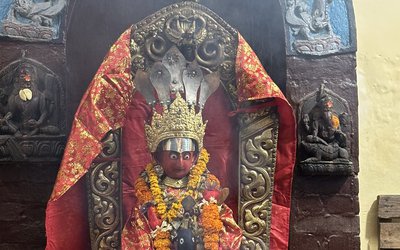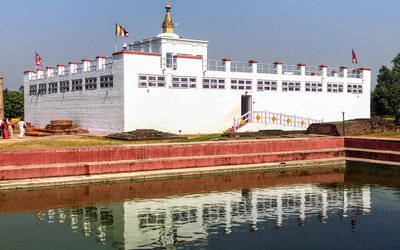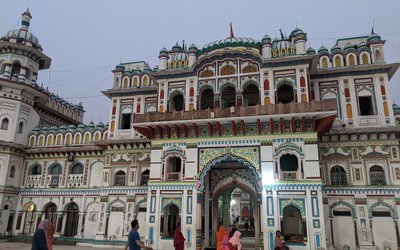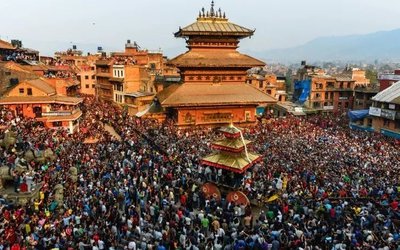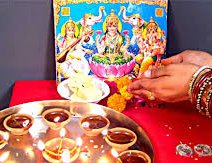
Centuries ago British Kirkpatrick said that Kathmandu valley had many more gods and goddesses than the people. Today many people of Kathmandu also celebrate more festivals than there are days. This might be the reason there is a popular saying in Kathmandu that Kahi Nabhayeko Jatra Handigaun Ma (Handigaun has festivals which can be found in no other places).
After celebrating ten days of Dashain festival, the five-day festival of lights is beginning on November 6. The festival is celebrated by Hindus all over the world including Nepal and India worshipping and praying for the god of wealth and illumination.
This is known as Tihar in Nepal or as a festival to honor Yama, the God of Death. However, the worship of Laxmi, the Goddess of Wealth dominates the festivities.
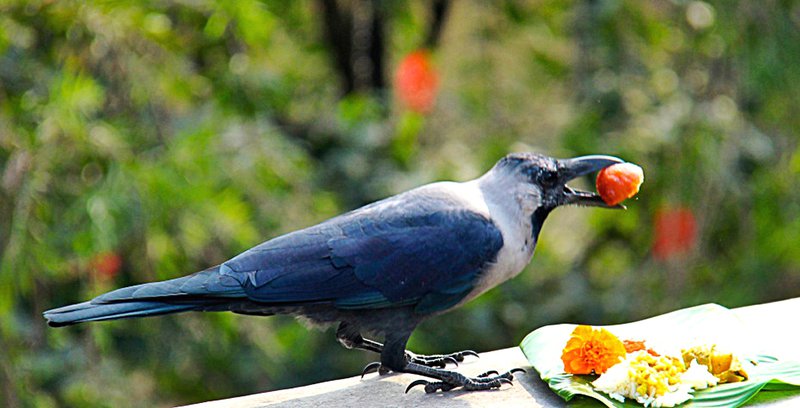
On the first day Kaag Tihar, the day of the crow, the informant of Yama, is worshipped on November 6.
The second day Kukur Tihar is for worshipping the dogs as the agents of Yama on November 7. This is the day people worshipped the dog with respect.
On the third day, on November 8, are Gai Tihar and Laxmi Puja. On this day cow is offered prayers and food in the morning, and Goddess Laxmi is offered elaborate prayers and puja in the evening.
This is the day when people will seek blessings from the god of wealth and this is the day of Dipawali or illumination. Market places and houses are decorated with flowers during Tihar. This festival is noted for lighting up of homes with candles, oil-wick lamps and electric lights.
Houses all over the country are lit up with extra lights and decorated with garlands.
People all over the country worship Laxmi in the evening lighting up their homes. In hill and suburban Kathmandu, girls and women also play Deusi-Bhailo.
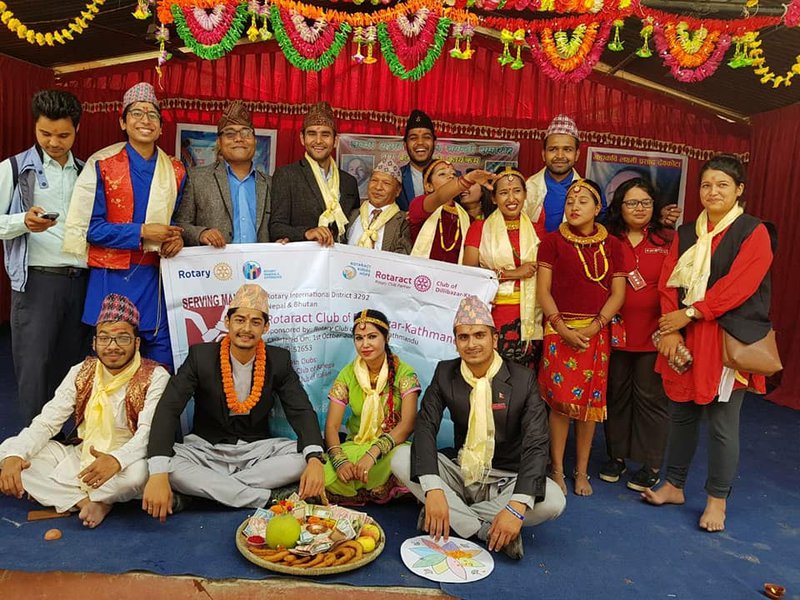
The fourth day is for the draught animal, oxen when the Newari community also performs Mha Puja dedicated to oneself on 9 November. This is the day also known as Govardan Puja.
The celebrations begin with the adoration of crows and dogs. Leaf dishes of rice, incense and light are set out for the dark messenger, while dogs are worshipped and offered goodies.
During the day known as Laxmi Puja, the Goddess of Wealth, is welcomed to people’s homes by making a path of footprints leading into the house. All lights are kept on and the doors and windows kept open to let in the goddess. Rows of lamps are placed along windows and doors, with the strong hope that Laxmi, the Goddess of Wealth notices and enters. The day also belongs to the cow that represents Laxmi.
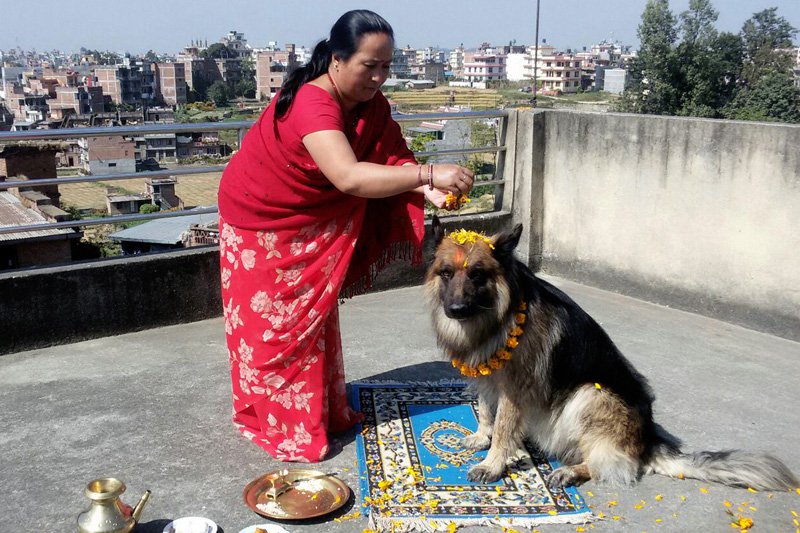
Goverdhan Puja, or Annakut or Annakoot (translated as “a mountain of food”), as it is also known, is a Hindu Festival in which devotees prepare and offer a large variety of vegetarian food to the murtis God as a mark of gratitude.
The fifth day is Brothers’ Day when sisters put tika on their brothers’ foreheads and give blessings.
Bhai Tika is the day people look forward to. In some communities, sisters and brothers accept tika from each other. Bhai means brother in Nepali. Brothers and sisters honor each other and the sisters pray to Yama, the God of Death, for their brothers' progress, prosperity and longevity. Sisters offer puja and gifts to brothers during Bhai Tika in Tihar.
The brothers bring gifts to their sisters and the festival ends with feasting. It is also traditional to go from house to house singing Tihar songs and bestowing blessings, whereupon the residents of the house give money in return. Fireworks also fill the skies despite a government ban on fire-crackers.
In Nepal and some states of India including Assam, Sikkim and West Bengal, the festival of Diwali is celebrated as Tihar. Diwali is an official and important holiday in many countries with Hindu populations, as it celebrates the triumph of light, good and knowledge over all evils and marks the turn of the year in the Nepali lunar calendar, Nepal Sambat.
Tihar, also called Swanti, is celebrated in the fall, although the exact date depends on the year.
Both Tihar and Diwali are known as "the festival of lights", as they are celebrated with lit lanterns called diyas which are placed inside and outside homes and there are firework shows.
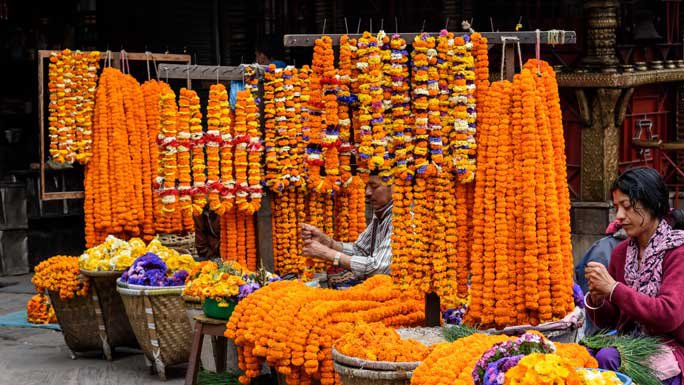
Diwali is a time of renovation and prayer, so people clean up their homes and meet their families for feasts, gifts and prayers, although the exact rituals depend on the region. The lights represent the victory of knowledge and hope over ignorance and despair, and therefore of good over evil.
In Nepal, Tihar marks the end of the national lunar calendar, so the renovations are especially important. This feeling of renewal applies to different things, from one's health to business and wealth.
Crows (Kaag tihar) are believed to be messengers of the gods, bringing grief and death. To please them and prevent bad events from happening, people offer treats like sweets and leave them on the roof for crows to take in the morning.
Dogs (Kukur tihar) are noted for their loyalty and honesty, and they are given marigold or chrysanthemum garlands and treats. Dogs are also honored with tilaka, a red mark on the forehead; this is often done for guests or idols in prayer.
Cows and oxen (Gai and goru tihar): It is widely known that cows are sacred in Hinduism, as they symbolize wealth and motherhood. During Tihar, cows and oxen are given flower garlands and treats, and sesame oil lights are lit in their honor. Cow dung is used to make mountains.
Mha Puja is a unique tradition in itself for the Newars to celebrate it along with their calendar called the Nepal Sambat. This year is Nepal Sambat 1135. This two-in-one day is one of the most important occasions of the Newars as it is also celebrated as their New Year Day. Great religious values are also attached to this day.
The main rituals of Mha Puja start in the evening. Members of the family, first males followed by females, sit cross-legged in a row. The elder group of females plays the role of facilitators for each member. A mandap, decorated with different colors and various grains, fruits and flowers, is drawn for each member of the family. In between the grains and fruits lies a mini mandap of oil, which represents the human soul. The human soul is placed between various grains and fruits so that a person will prosper throughout the year since each object represents a particular God and it is believed that each deity will bless the person. An oil lamp with velvet cloth wick equal in length to one’s own face is lit on top of the mandap facing all four cardinal directions so that a person will be renowned in all the places of this earth.
Maha Puja
Newars all over the nation celebrate Mha Puja, a Newar custom of worshipping one’s own body. Apart from worshipping oneself, all the household entities like brooms, water pots, utensils and machines are also worshipped in a same way.
The customs of celebrating Nepal Sambat started from October 880 AD. According to a popular legend, there used to be a learned person in Bhaktapur who ordered porters to get sand from Lakhu Tirtha, a river in Kathmandu because he knew that it would turn into a heap of gold the next day. A person named Shankhadhar Sakhwaa came to know about it, and he enticed the porters to leave the sand in his place.
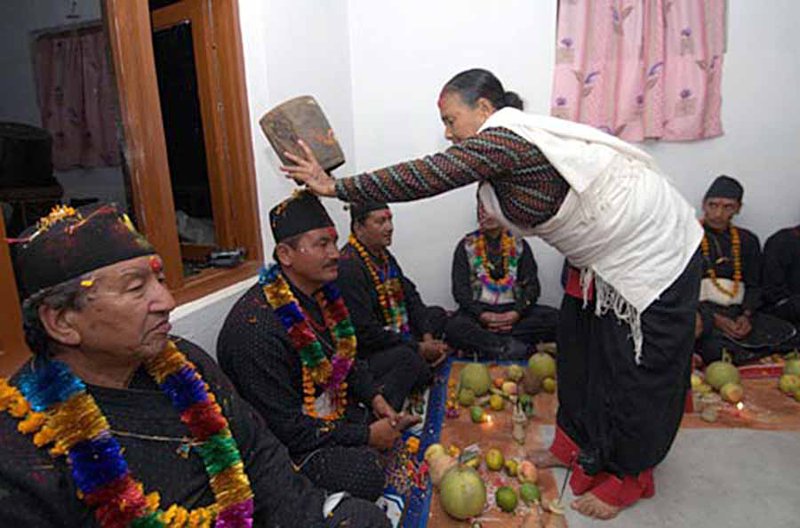
The next day, the sand turned into gold and with that gold he paid off the debt of all the people in the Kathmandu Valley. So from that day, people started celebrating it as their New Year to commemorate their happiness.
Even today, people are very enthusiastic to welcome the New Year. Every year, the day starts with a rally and the greeting of “Nhu Daya Bhintuna!” which means “Happy New Year”. Different programs and functions are also organized in the Kathmandu Valley every year on this day.
- MELAMCHI WATER SUPPLY: No Interruption During Monsoon
- Jun 25, 2025
- KOREAN RETURNEES: Successful Integration
- Jun 25, 2025
- UPPER TRISHULI-1: Engaging With Local
- Jun 25, 2025
- IME GROUP: Twenty Five Years Of Journey
- Jun 24, 2025
- NEPAL’S AIR POLLUTION: A Growing Health Concern
- Jun 24, 2025


